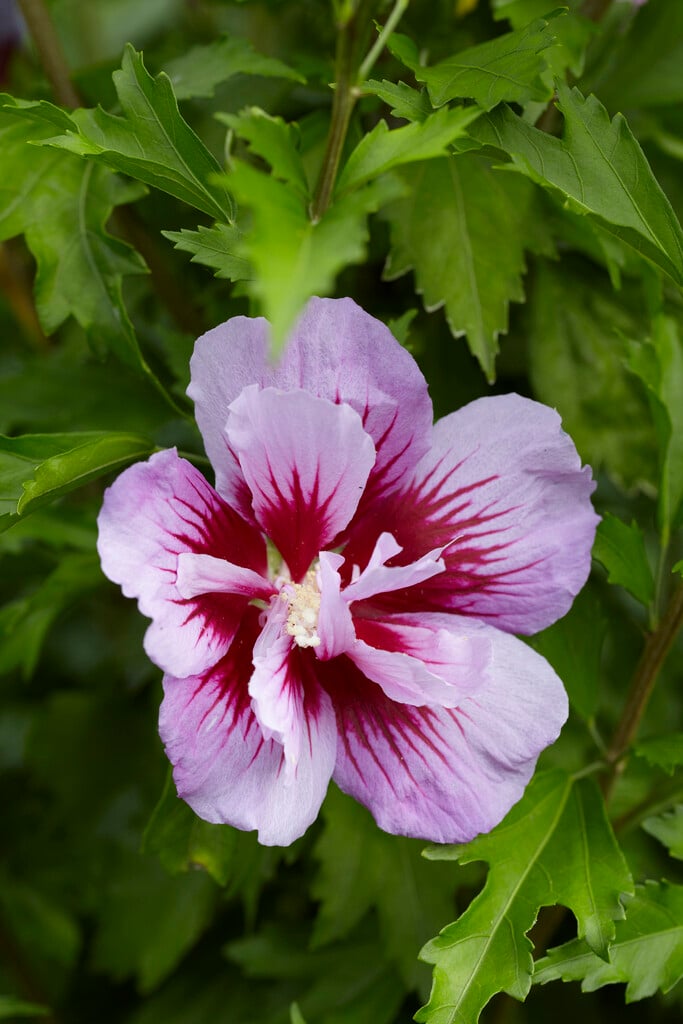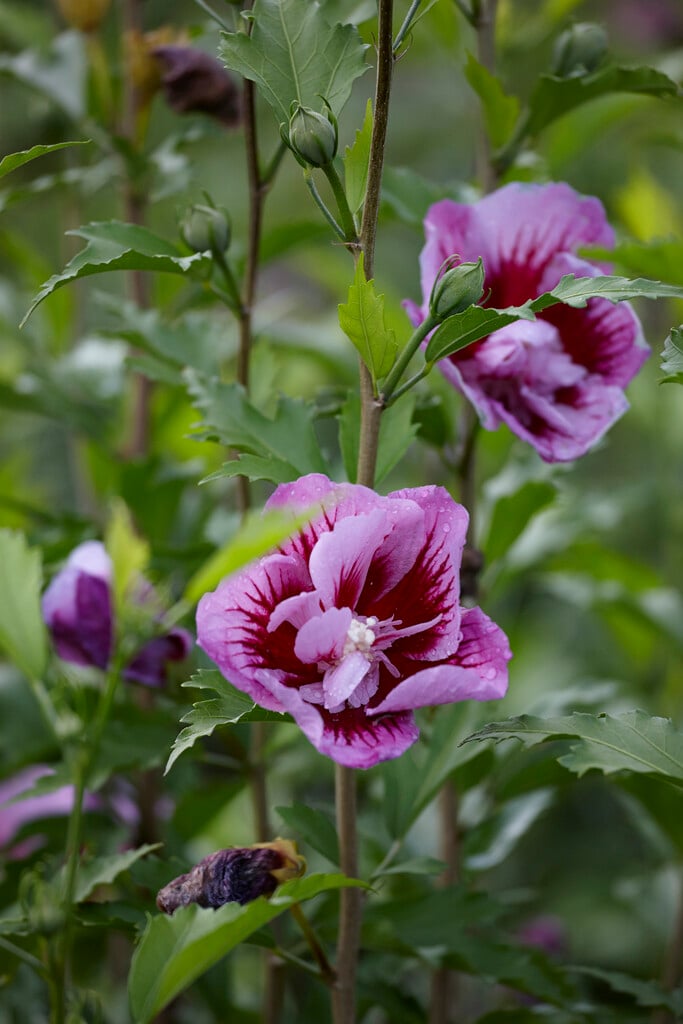Hibiscus syriacus 'Gandini Santiago'PBR
rose of Sharon [Purple Pillar]
This hibiscus is beautiful but what makes it really stand out is its columnar habit. It can reach between 3 and 4 metres high yet its spread is usually less than a metre, making this an ideal plant for the back of a border or a small space. The full height of the plant is covered with striking mauve pink flowers, with a deep red starburst at its centre, from late summer to autumn. Definitely one that could be fitted in anywhere in the garden!
Size
Ultimate height
2.5–4 metresTime to ultimate height
5–10 yearsUltimate spread
1–1.5 metresGrowing conditions
Moisture
Moist but well–drained, Well–drainedpH
Acid, Alkaline, NeutralColour & scent
| Stem | Flower | Foliage | Fruit | |
| Spring | Green | |||
|---|---|---|---|---|
| Summer | Pink Purple Red | Green | ||
| Autumn | Pink Purple Red | Green | ||
| Winter |
Position
- Full sun
Aspect
South–facing or West–facing or East–facing
Exposure
Sheltered Hardiness
H5Botanical details
- Family
- Malvaceae
- Native to GB / Ireland
- No
- Foliage
- Deciduous
- Habit
- Bushy, Columnar upright
- Genus
Hibiscus can be deciduous or evergreen shrubs, trees, annuals or perennials, with simple or palmately lobed leaves and large, funnel-shaped flowers over a long flowering season
- Name status
Accepted
How to grow
Cultivation
Grows best in neutral to slightly acidic or slightly alkaline, humus-rich, moist but well-drained soil. Plant in a warm sheltered position in full sun to encourage flowering. Can also be grown in pots. Feed in spring, with a slow-release, high potash formula, such as rose food, and mulch in autumn to help maintain soil moisture levels and suppress weeds
Propagation
Propagate by softwood cuttings in late spring, by semi-ripe cuttings in summer, or by layering in spring or autumn
Suggested planting locations and garden types
- City and courtyard gardens
- Cottage and informal garden
- Patio and container plants
- Coastal
- Flower borders and beds
- Wall side borders
Pruning
Very little pruning required, just prune away any broken or dead branches after flowering - pruning group 1
Pests
May be susceptible to aphids, scale insects, mealybugs and glasshouse whitefly when grown under glass
Diseases
May be susceptible to honey fungus (rarely) and powdery mildews
Get involved
The Royal Horticultural Society is the UK’s leading gardening charity. We aim to enrich everyone’s life through plants, and make the UK a greener and more beautiful place.

